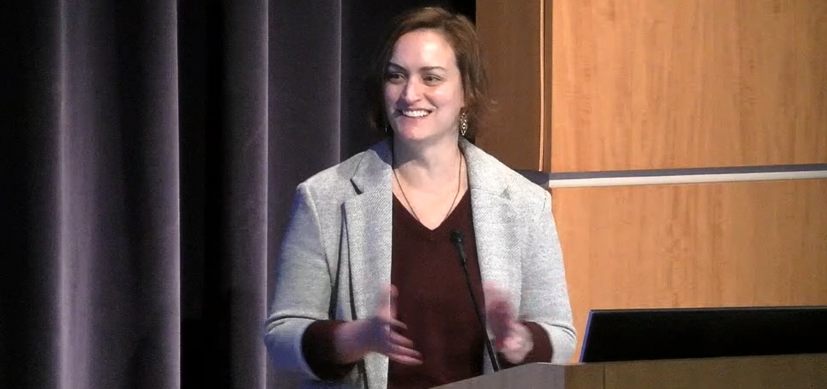Guidance for patient care related to patient and family experiences of racism
Post Date: June 24, 2020 | Publish Date:

As care providers at Cincinnati Children’s we are dedicated to the best patient care possible. We can help by creating a safe space for families to share, listen, and connect with resources. This handout is not intended to be comprehensive; it is one guide to support your conversations with patients through exploration of common barriers. We provide sample language to start these difficult conversations.
Myth: “It’s not my place to talk about race with my patients.”
Fact: Trauma, including direct experience or viewing coverage of traumatic events related to racism, adversely affects children’s physical and psychological health, functioning, and development. Children and caregivers from racial minority groups are more likely to experience distress from acts of violence and aggression against people of color. Racial and historical trauma caused by systemic racism create cumulative negative effects due to repeated exposure to traumatic stressors. Race-related stress also threatens the psychological resources needed to cope and fulfill basic needs. Negative effects of these traumas can be mitigated through acknowledgement of systemic racism, validation, and authentic engagement. Further, avoiding this topic neglects important aspects of your patients’ health.
If a family declines your invitation, it’s OK. There are lots of reasons this could occur, and it does not mean that you “did something wrong.”
- As a minority, talking about race with someone who is not a member of the same racial group can be difficult and scary.
- Patients/families may have never been asked about these issues during a medical visit.
- It may take several messages to build trust that communications are psychological safe.
Finding the Words
- “As a part of our visit today, is it ok with you if we talk about how Justin and your family are coping with the issues of ongoing police brutality against African Americans?”
- “I want to acknowledge that there are many things impacting families right now. There is the COVID-19 pandemic, but also the recent murder of George Floyd and the ongoing police brutality against African Americans. How is all of this affecting your family?”
- “The recent shootings of unarmed black and brown people have been unacceptable. I want you to know our team is here.”
Myth: “If I don’t say the ‘right thing’ it will be bad for my patient.” “I’m not qualified to bring up issues of race with my patients.”
Fact: It is normal to feel worried about finding the “right” words when talking about something challenging. It’s ok to feel uncertain. The most important thing is to open the door to the conversation, listen, validate, and acknowledge your patient’s experience. Do not try to fix, justify, or change the family’s narrative.
Finding the Words
Acknowledge and validate feelings: Reflecting by paraphrasing or restating what the patients say helps them feel understood.
- “Racism is a powerful force in our country…”
- “It seems like you felt. . .”
Normalize and destigmatize: Let patients/families know they are not alone.
- “This is about the way that white people treat black people unfairly.”
- “Your feelings are normal. A lot of people are feeling the same way.”
Express shared values: Patients will reveal their feelings, priorities, and values as they describe their concerns. You can support them by recognizing the values you share.
- “That isn’t fair. I would feel angry too. . .”
- “That must be hard. Anyone would feel that way.”
Emphasize strengths: Ask them if they have someone (family, friends, faith, or community) in their life to support them, and recognize their resilience in the face of these challenges.
- “What do you do or who do you turn to when you need some support?”
- “What are things you’ve done in the past to get through hard situations?”
Myth: “Bringing this up will be traumatizing or damaging to my relationship with my patient.”
Fact: Your role is to open the door to a conversation while giving a patient complete control about their choice to engage in discussion. This acknowledgement of systemic racism and expression of authentic concern communicates a safe environment. This choice also allows them to protect themselves psychologically by controlling the discussion. The alternative of saying nothing may be more damaging.
Myth: “I shouldn’t talk about issues of race with patients because I’m white.”
Fact: Racism negatively impacts patient health so it falls within your purview as a care provider. Additionally, you can build strong rapport and trust with families by acknowledging the impact of racism on their well-being.
Finding the Words
- “Talking about these issues can be very challenging and most people are not used to having these discussions with others outside of their race.”
Myth: “I have too many feelings about this and I need to be calm to talk with patients.” Or “I am not comfortable enough to talk about this with patients.”
Fact: It is normal to feel upset when we see people treated unjustly. It is also important that we model managing emotion and avoid hiding our feelings. Being calm does not mean an absence of emotion. Engaging in a self-check can help you be most prepared to manage your own emotions during these discussions.
- Self-Check: Reflect on how you feel about issues of race and discussing them with families. Understanding your own thoughts, feelings, and reactions can help you feel more comfortable and intentional in discussions with patients and families. We share common reactions and evidence-based information to support the self-reflection process.
- Increase your comfort with the uncomfortable by learning more about issues of race. To start this journey, refer to resources listed below.
Myth: “This patient is too young to be impacted.”
Fact: As early as 6 months, babies can notice race-based difference and Between the ages of 2 – 4 years children begin to internalize racial bias. Efforts to mitigate the negative effects of racial trauma are effective and essential for those of any age.
Myth: “We won’t have enough time in the visit.”
Fact: The current events are not new information for African-American families and racism and police brutality are frequently discussed in families. Most families want their experience validated and will appreciate that racism is acknowledged in the context of their visit. Tolerate that this discussion won’t ‘solve’ anything but is a step. Staying with the conversation despite no resolution sends a powerful message of psychological safety.
Finding the words
Thank and provide closure: Let patients know that you appreciate their openness and trust and your knowledge of their experience can help you better care for them. If possible, provide a next step and keep the conversation open for future contact. Tolerate that this discussion won’t ‘solve’ anything but is a step. Staying with the conversation despite no resolution is a powerful message of psychological safety to send to patients.
- “I appreciate your willingness to talk with me about your experiences.”
- “I am so glad I and our team can be a part of caring for your family.”
- “If it’s ok with you, we can keep checking in about this when you come in for your next visit.”
- “If it is ok with you, I would like to ask a member of our psychosocial team to join us/come in before you leave.”
General Guidance
- Be mindful of child’s age and development. Alter language for development and allow for occasions where it is appropriate to invite a caregiver to step into another room with you.
- Use words such as “killings”, “murders”, or “death of an unarmed black person” are validating. Using words such as “incident,” “event,” or “misunderstanding” can come across as victim blaming.
- Be direct, factual, and clear.
- If you are unsure of what to do or say…acknowledge, validate, and listen
- In addition to systemic and historical racism, learn about the most recent cases
Learn about racial trauma and ways to support discussions on race
- Website with resource list from the American Psychological Association https://www.apa.org/news/events/my-brothers-keeper
- Blog series from APA on https://psychologybenefits.org/res/
- Recent news articles on racial trauma https://slate.com/news-and-politics/2020/06/social-media-george-floyd-racial-trauma-dsm.html
- Talking about Race-Online from the national museum of African American history at the Smithsonian https://nmaahc.si.edu/learn/talking-about-race “The online portal provides digital tools, online exercises, video instructions, scholarly articles and more than 100 multi-media resources tailored for educators, parents, and caregivers—and individuals committed to racial equality,” the museum wrote in a press release. “There are suggestions for how to talk about racism with your kids, coworkers, or students.”
More information on recent cases
- Breonna Taylor- 26 yo, AA, female, shot in her home by 3 Louisville, Kentucky police officers https://www.cnn.com/2020/05/21/us/breonna-taylor-death-police-changes-trnd/index.html
- Ahmaud Arbery- 25 y o, AA, male, chased and killed by 3 white men while jogging in Brunswick, Georgia. https://www.cnn.com/2020/05/11/us/ahmaud-arbery-mcmichael-what-we-know/index.html
- George Floyd- 46 yo, AA, male, killed on camera while in restraints on 5/25/2020 by Minneapolis Police Officer. https://www.nbcnews.com/news/us-news/man-dies-after-pleading-i-can-t-breathe-during-arrest-n1214586
- Christian Cooper- 43 yo, AA, male who was bird watching, when a white woman called police to say “an AA man was threatening her” because he asked her to leash her dog. https://www.nbcnews.com/news/us-news/white-woman-calls-nypd-after-black-man-asks-her-put-n1214531
- Rashard Brooks- 27 yo, AA, male, shot in the back and killed by police in Atlanta, Georgia. https://www.nbcnews.com/news/us-news/police-killing-rayshard-brooks-atlanta-ruled-homicide-n1231042
References
National Child Traumatic Stress Network, Justice Consortium, Schools Committee, and Culture Consortium. (2017). Addressing Race and Trauma in the Classroom: A Resource for Educators. Los Angeles, CA, and Durham, NC: National Center for Child Traumatic Stress.
Robinson, M., Ross, K., & Endsley-Hines, M. “Discussing Community Trauma in Response to Killings and Mistreatment of Black and Brown Americans.” Handout
Trent, M., Dooley, D. G., & Dougé, J. (2019). The Impact of Racism on Child and Adolescent Health. Pediatrics, 144(2), e20191765. doi:10.1542/peds.2019-1765
Prepared by Drs. Emily McTate and Rachel Herbst
This document was last updated on June 23, 2020.




